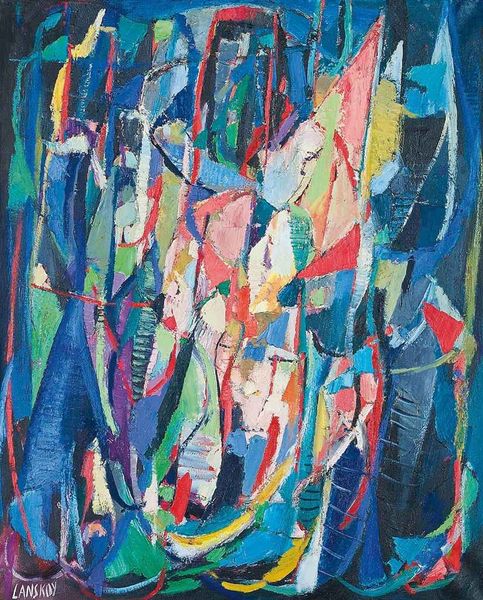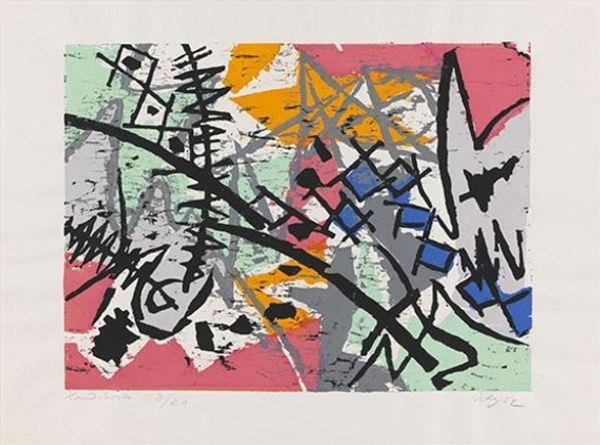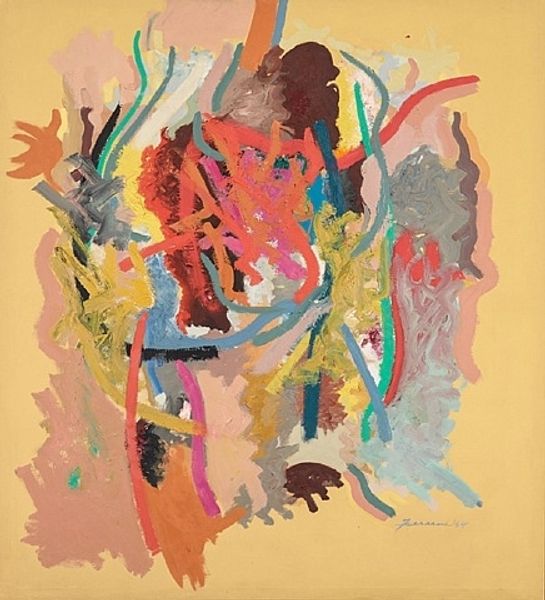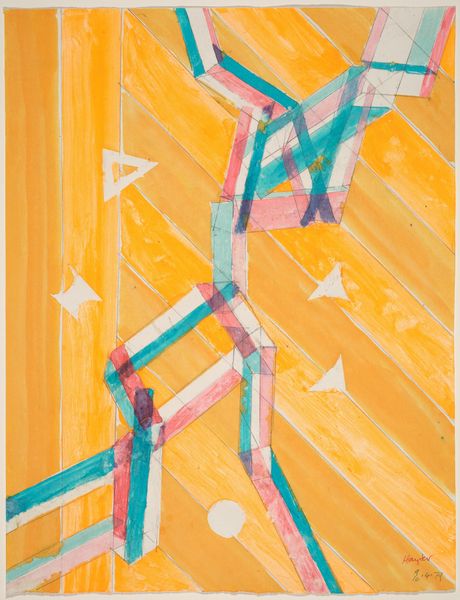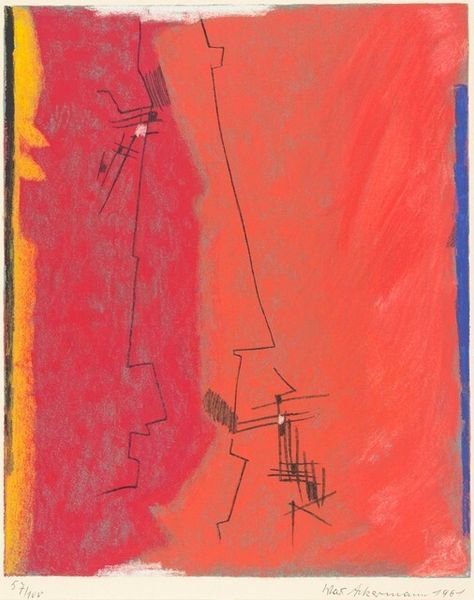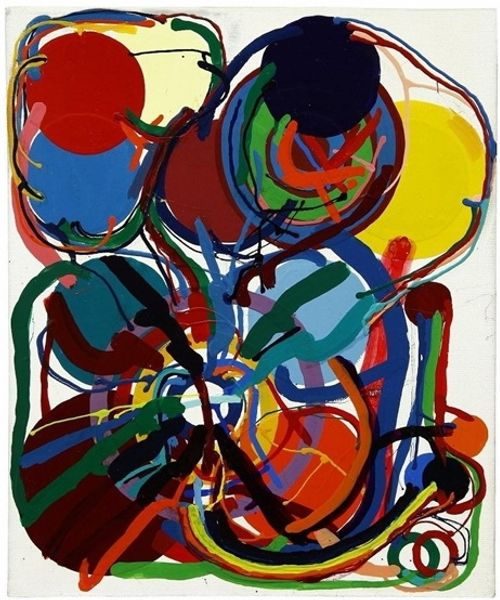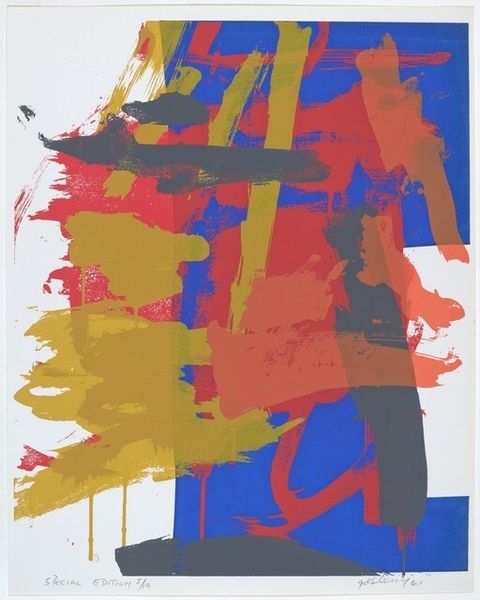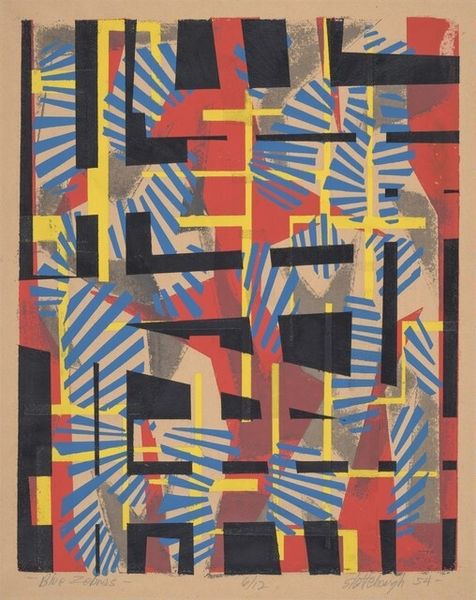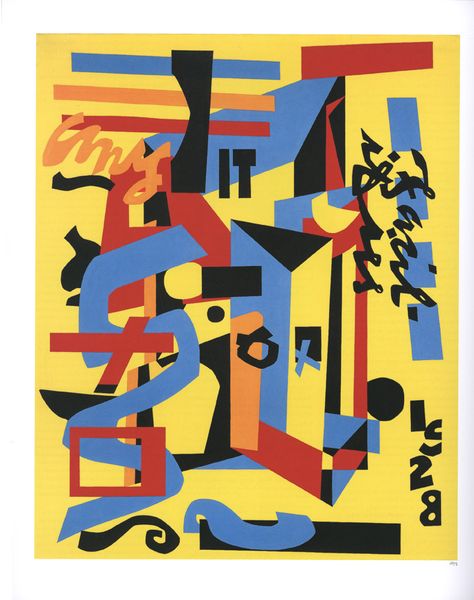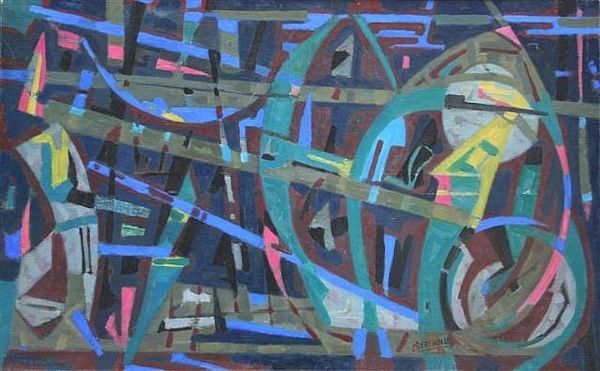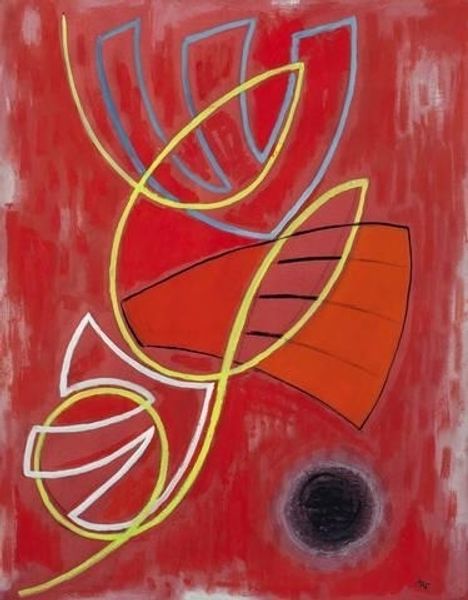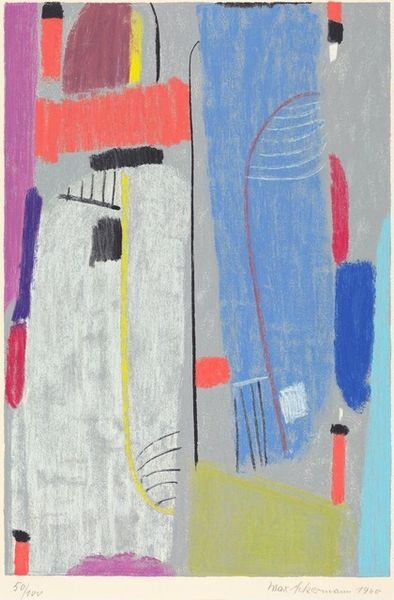
acrylic-paint
#
acrylic-paint
#
form
#
geometric
#
geometric-abstraction
#
abstraction
#
line
#
modernism
Copyright: Andre Lanskoy,Fair Use
Curator: Looking at Andre Lanskoy's "Blue Composition," I am struck by the vibrancy of the colours against that deep background. Editor: The way those shapes jostle feels very active and urban. Is that a typical direction for Lanskoy? Curator: He developed a style of geometric abstraction in his painting and printing. Though the date is unspecified, he tended toward non-representational compositions later in his career. Let’s think about the role of the acrylic medium here, allowing these strong fields of unmodulated color, and how it would differ if executed in oil. Editor: That stark quality reinforces a sense of immediacy. I imagine it affected the artistic milieu of the time. Acrylics, emerging from industrial applications, offered a new, almost manufactured purity of colour to artists breaking from tradition. What can we say about the piece's place in the institutions of its time? Curator: That's astute. Geometric abstraction itself gained prominence after World War I as artists sought a universal visual language beyond national identities and narratives. This piece speaks to an international desire for a clean, clear visual vocabulary divorced from past conflicts, and speaks to post-war boom in the consumption of art, of geometric abstraction. Galleries readily embraced this aesthetic. Editor: This resonates with the rejection of tradition, with this newfound, almost utopian faith in simplified forms after all the disruptions, horrors, and traumas experienced through the world wars. And that proliferation you mentioned implies this work had a democratizing influence, in contrast with exclusive gallery models... Curator: Absolutely. In its materials and motifs, it participates in a wider project of transforming visual culture—and through its wide proliferation and relative affordability of the material, helps transform its modes of reception. Editor: The tension of that legacy continues today; the use of modern materials coupled with its mass audience suggests, on some levels, the rejection of an "establishment", while simultaneously finding validation through this proliferation in establishments, and popular consciousness. Curator: Precisely. Thank you, this dialogue helps focus the art of its process, while locating it to a complex context! Editor: And yours brings focus on its effect, where the piece holds value across time and space!
Comments
No comments
Be the first to comment and join the conversation on the ultimate creative platform.

